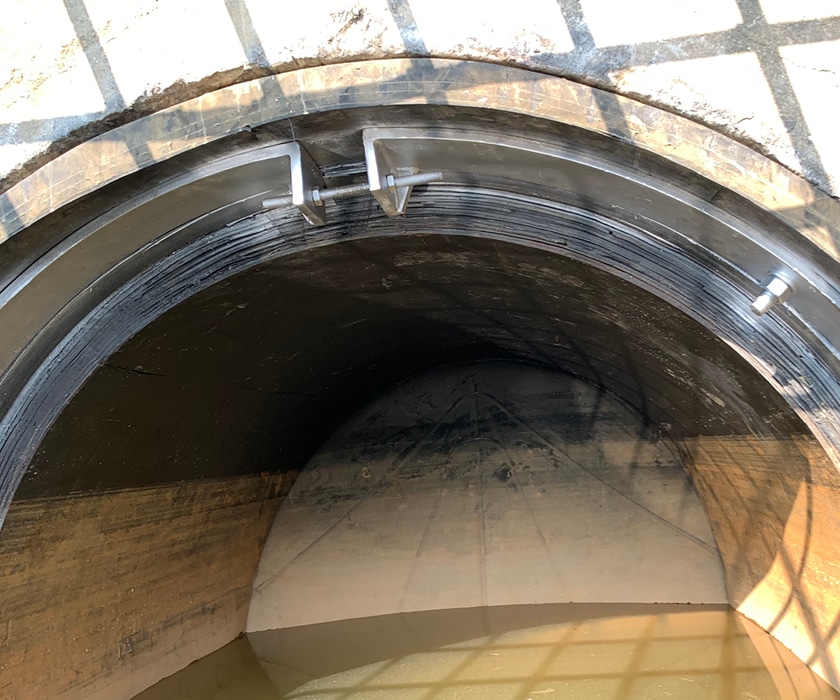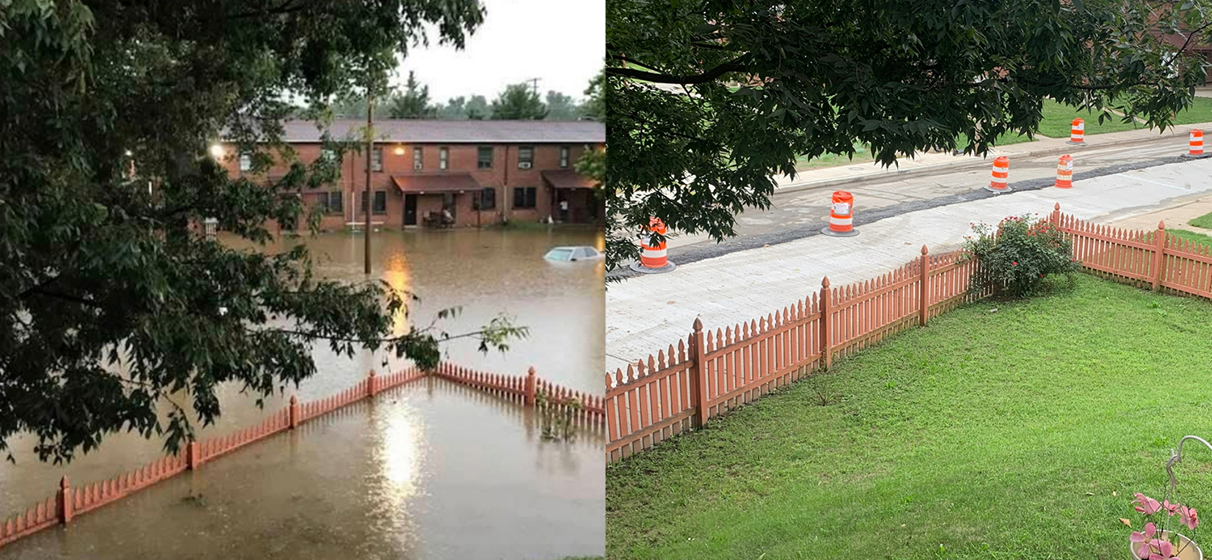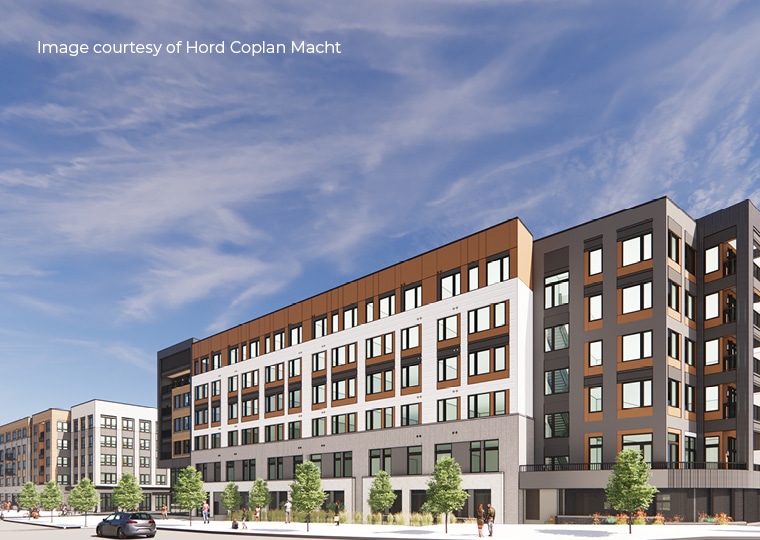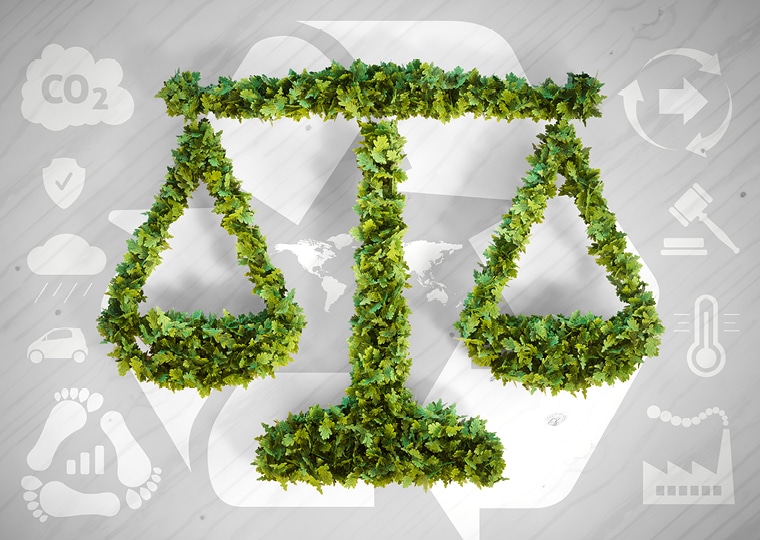For nearly 20 years, residents and businesses in the Cherry Hill neighborhood in Baltimore, MD, have faced chronic flooding, which has damaged homes and cars and disrupted the lives of residents. During this time, even minor rainstorms flooded the streets and homes along Spelman Road and Round Road.
To help the community develop a solution, STV was initially selected by the City of Baltimore’s Department of Public Works to provide preliminary design alternatives. But when an April 2022 rainstorm displaced locals from their homes—which were deemed uninhabitable—an emergency agreement transformed this project into an accelerated, one-year program for design, construction and completion. STV designed an upgraded, resilient system that mitigates flooding impacts and safeguards against future sea level rise due to climate change.
Completing the design and construction quickly was paramount for two key reasons. First, the City of Baltimore deployed an extremely expensive temporary pump solution to keep the streets flood-free during construction.
The second—and most significant reason—was providing the community with a safe living environment.
Cherry Hill is home to approximately 12,000 residents, numerous schools and businesses, as well as Baltimore’s largest public housing units. A historically Black neighborhood, Cherry Hill was originally a planned community for African American war veterans returning from WWII that was situated along the Patapsco River and dump sites for hazardous materials.
While its founding may have been rooted in disenfranchisement, the neighborhood is home to a deeply engaged community of small business owners, doctors and multigenerational families who are envisioning Cherry Hill’s economic vitality through a neighborhood transformation plan.

When we first evaluated the system in 2017, we discovered that a collapsed pipe under the nearby CSX railway tracks was causing the most glaring issue. Stormwater runoff would pond on the neighborhood’s streets and lawns and take one to two days to dissipate, resulting in major erosion and subsequent sediment flow downstream. It even created a breeding ground for mosquitos and other insects, while residents also experienced unsafe driving conditions, roadway base deterioration and potential groundwater contamination.
During the five-month design period, our team managed numerous challenges.
First, the location: we needed to develop a new system through and around existing infrastructure, like the CSX railway, as well as existing water lines, gas lines, sewer lines and an old steam bank.
Second, we needed to find an economically feasible outfall location that met current and potential capacity and hydraulic grade line standards, while bypassing lengthy coordination with adjacent private landowners. The existing drainage system runs beneath 20 feet of fill at a former landfill turned public park called Reedbird Park.

Due to the unknown conditions of the existing outfall pipe, a CCTV video analysis of the pipe was performed. STV determined that a cured-in-place pipe (CIPP) lining, which is a jointless, seamless pipe lining within the existing pipe, would be necessary to maintain the outfall’s condition and integrity.
We designed a new storm drainage system that removed the existing CSX outfall and rerouted it to the Reedbird Park system. Our design also featured an oversized upstream trunk line accommodating future outfall replacement and sea level rise.
Our previous evaluations also found significant sediment buildup, sediment entering the system, as well as an abundance of trash and debris that would clog the pipe network. Alongside our client and the project’s contractor, the project site now features:
- A depression along the most downstream manhole within the City of Baltimore Department of Transportation (DOT) right-of-way that collects trash, remediating the community issue of trash clogging the system up after storm events and providing a centralized maintenance location.
- A new trash rack that prevents debris from the Patapsco River from clogging the outfall. STV also developed an operation and maintenance manual for the city for managing trash collection.
- A tidal valve gate that controls backflow from Patapsco River, preventing future flooding and sediment build up that could clog the pipe network.

The upgraded system is not only cost-effective but also resilient. We’re proud that our work can help support the local community and the city by improving the quality of life and safety for residents for years to come.








